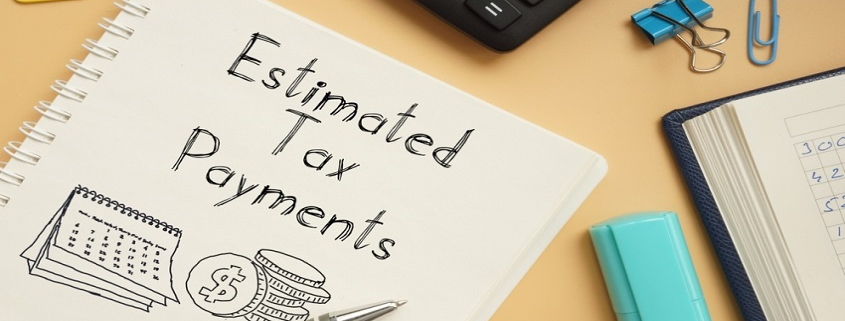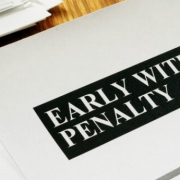Don’t Forget to Pay Your 2023 Estimated Taxes. Here’s When the Final Payment’s Due
As the end of the year draws closer, so too does the deadline for estimated taxes.
Paying estimated taxes four times a year is a smart move for those who work a side hustle, take on freelance jobs or own a business, since this income likely isn’t automatically withheld by an employer. If you have other revenue not subject to withholding — interest, dividends, capital gains, alimony, cryptocurrency or rental income — you also typically need to make quarterly estimated tax payments to the IRS.
Doing this not only minimizes your financial burden when tax day arrives, but it can help you avoid IRS self-employment penalties for not paying throughout the year.
The estimated-tax filing process can be complicated, but it can be simplified. Here’s everything you need to know to calculate your taxes and file on time.
What are estimated taxes?
If you earn or receive income that isn’t subject to federal withholding taxes throughout the year — side hustle earnings or income from a rental property, for example — you’ll pay as you go with estimated taxes. Estimated tax is a quarterly payment based on your income for the period. Essentially, estimated tax allows you to prepay a portion of your income tax every few months to avoid paying a lump sum when your tax return is due.
When are estimated taxes due?
Estimated taxes are paid quarterly, usually on the 15th day of April, June, September and January of the following year. One notable exception is if the 15th falls on a legal holiday or a weekend. In those cases, you must file your return by the next workday.
The deadlines for 2023 estimated taxes are below.
Estimated tax deadlines
| Earning period | Taxes due |
|---|---|
| Jan. 1 to March 31, 2023 | April 18, 2023 |
| April 1 to May 31, 2023 | June 15, 2023 |
| June 1 to Aug. 31, 2023 | Sept. 15, 2023 |
| Sept. 1 to Dec. 31, 2023 | Jan. 16, 2024 |
Who has to pay estimated taxes?
If you filled out the IRS W-4 form, which provides directions for your employer about how much to withhold from each paycheck, you might not need to pay estimated taxes. If you aren’t a W-4 salaried employee, however, you probably need to keep estimated tax payments on your radar. According to the IRS, you generally have to make estimated tax payments if you expect to owe tax of $1,000 or more when your return is filed, and if your employment type falls into one of these categories:
- Independent contractor or freelancer
- Sole proprietor
- Partner
- S corporation shareholder
There are other sources of income that fall under the estimated tax umbrella, including:
- Dividends and interest earned from investment sales
- Royalties for past work
- Landlord rental income
- Alimony
- Unemployment benefits
- Retirement benefits
- Social Security benefits, if you have other sources of income
- Prizes and awards
You may also need to pay estimated tax as a full-time employee if your employer isn’t withholding enough from your salary. To update your W-4 with the correct withholding amount, use the IRS Tax WIthholding Estimator tool, complete a new W-4, Employee’s Withholding Allowance Certificate form and submit it to your employer.
Estimated taxes are due, regardless of whether you’re paid by direct deposit, check or digital payment services like PayPal, CashApp, Zelle or Venmo. Note: While you should be paying taxes on that income already, a new rule under the American Rescue Plan requires third-party payment networks to report $600 or more payments to the IRS.
How do I calculate my estimated taxes?
There are a few ways to calculate your quarterly tax payments depending on your business model and annual earnings.
- If you earn a steady income, estimate the tax you’ll owe for the year and send one-fourth to the IRS each quarter. You’ll also need to include self-employment taxes.
- If your income varies throughout the year, you can estimate your tax burden based on your income and deductions in the previous quarter. The IRS Estimated Tax Worksheet can help you do the math.
If you’ve overestimated your earnings at the end of the year, you can complete a 1040-ES form to receive a refund or apply your overpayment to future quarterly taxes. If you underpaid, the form can help you calculate what you still owe.
How do I pay my estimated taxes?
When filing your estimated taxes, use the 1040-ES IRS tax form, or the 1120-W form if you’re filing as a corporation. You can fill out the form manually with the help of the included worksheets, or you can rely on your favorite tax software or tax adviser to walk you through the process and get the job done. From there, you can pay your federal taxes by mail or online through the IRS website. You’ll also find a complete list of accepted payment methods and options, including installment plans.
Source: CNET





